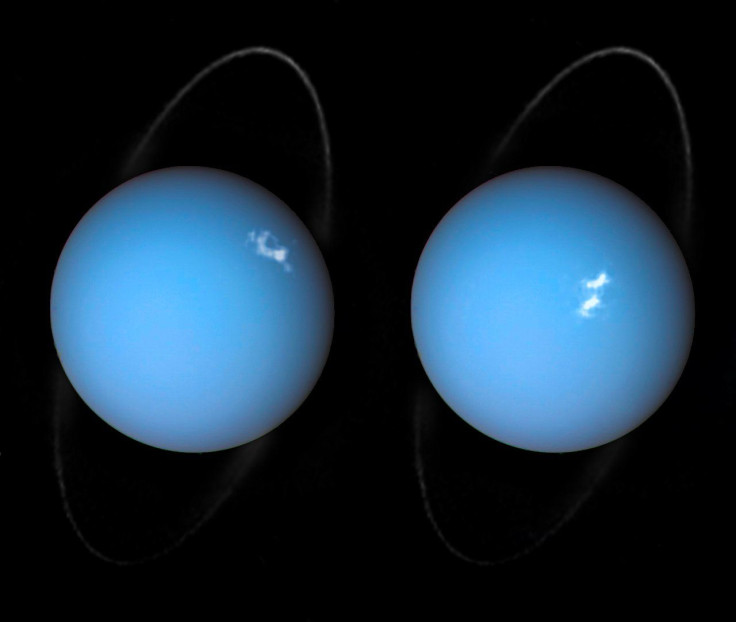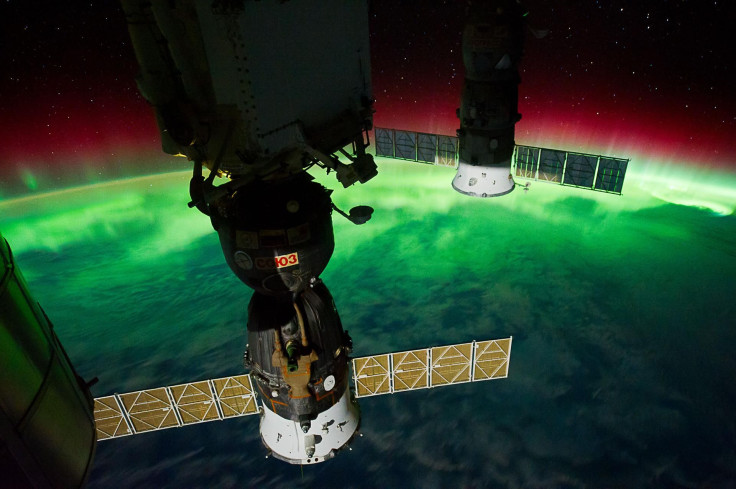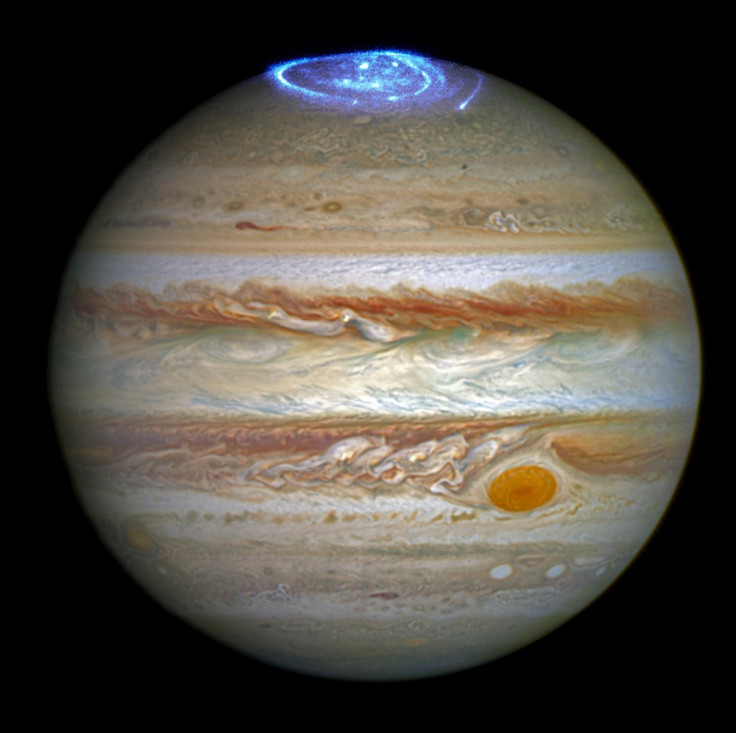Auroras Light Up Uranus: NASA Shares Photo Of Planet’s Sky

The gorgeous streams of light in Earth’s atmosphere known as auroras are not special to our planet, and now astronomers are learning more about the ones on Uranus.
NASA’s Goddard Space Flight Center has released an image of auroras flaring on that icy, ringed planet in our outer solar system, a composite made by images from the Voyager 2 space probe and the Hubble Space Telescope that is in orbit around Earth. They look a bit like lightning shocks, stark white against the planet’s blue atmosphere.
According to NASA, auroras bring swirls of light to our sky when charged particles, such as electrons, that are blown in this direction — from the Sun, for example — interact with gases in Earth’s atmosphere. Their shape comes from how they move when they encounter our planet’s magnetic fields, and they can be spotted in places that are nearer to Earth’s poles.

A similar process takes place on other planets where there are auroras, like Uranus, Jupiter and Saturn.
With the recent observations of auroras on Uranus, which NASA called the “most intense auroras ever seen on the planet,” astronomers are learning more about how they work out there.
Read: How to See Mars without Leaving Earth
“By watching the auroras over time, they collected the first direct evidence that these powerful shimmering regions rotate with the planet,” NASA said. “They also re-discovered Uranus’ long-lost magnetic poles,” which scientists had lost track of a few decades ago.
It may sound easy to find a planet’s poles, but Uranus makes things more difficult because it is almost orbiting on its side, with its poles pointing toward the Sun rather than perpendicular to it.


See also:
© Copyright IBTimes 2025. All rights reserved.





















